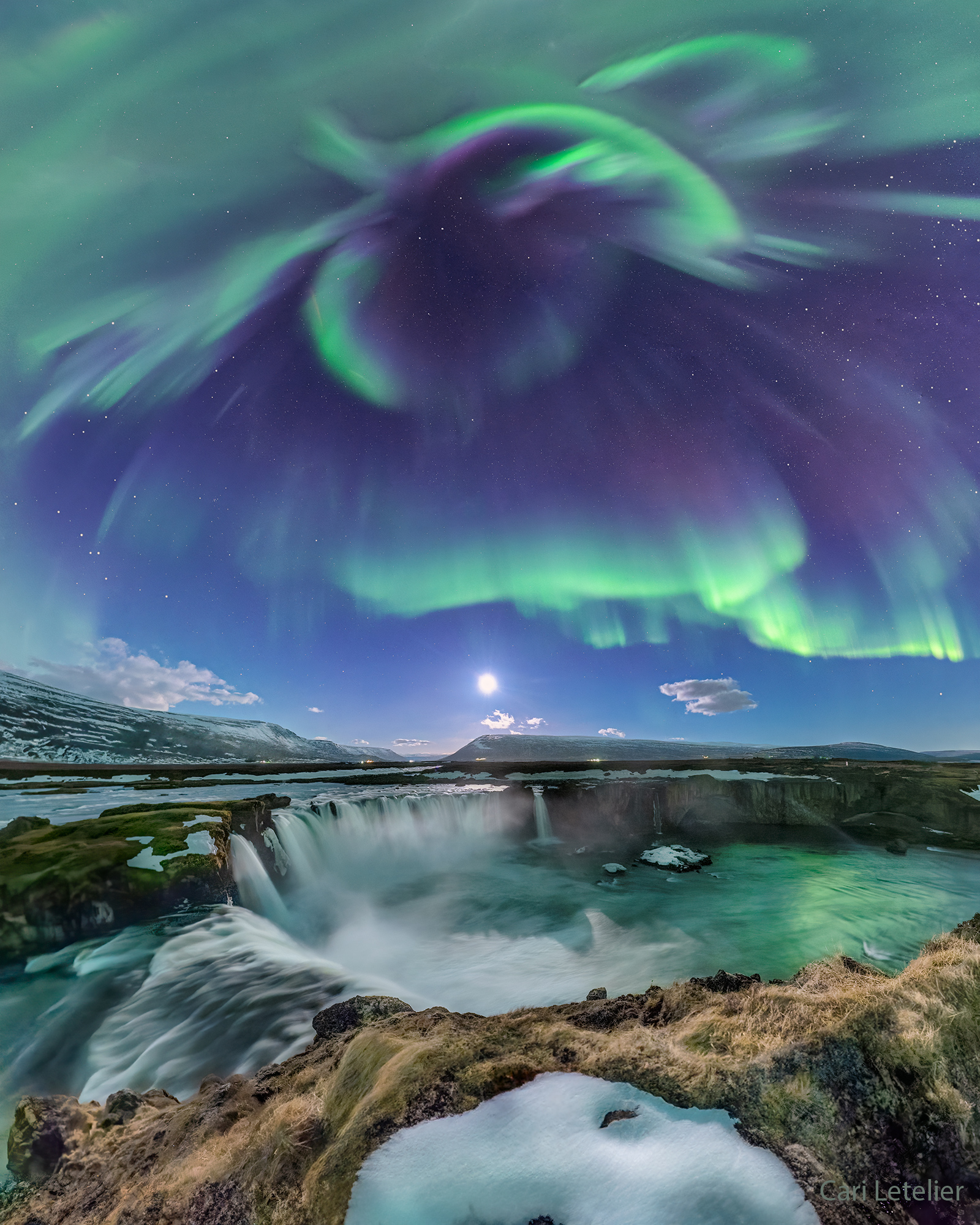Lights in the Lothal Sky
On this May the 4th, I’m excited about the long-awaited release of the soundtracks for seasons three and four of Star Wars Rebels. This animated series is in the running for my favorite all-time bit of Star Wars, with themes of found family, loyalty, and hope. The music is as spectacular as the animation, with Kevin Kiner meeting the challenge of following in the footsteps of John Williams.
And, in an episode from the first season, there is a scene that gives us a chance to use science to learn about a world in the Star Wars universe!
Fiction
In the Star Wars Rebels series, the planet Lothal is both the home of one of our heroes and the site of an important Jedi Temple. The temple is introduced in the tenth episode of the first season, “Path of the Jedi.” As Kanan Jarrus and Ezra Bridger approach the Jedi Temple, which is located in the northern hemisphere of the planet, yellow aurora is clearly seen in the sky.

I must admit, I squeaked with delight when I first saw the aurora, because its presence allows us to learn about the physical characteristics of Lothal.
Fact
We can learn about Lothal from the aurora because we understand what causes aurora here on Earth.

Often referred to as the “Northern Lights” or the “Southern Lights”, the aurora on Earth is due to interaction between the Sun’s solar wind and the Earth’s magnetic field. What is the solar wind? It is the continuous flow of high-speed charged particles, mostly protons and electrons, that escape the gravity of the Sun. There is a steady component to this solar wind, but activity on the Sun, such as solar flares and coronal mass ejections, can release strong bursts of these particles. When these particles encounter a planetary magnetic field, they accelerate along the magnetic field lines until they hit either the atmosphere (if the planet has one) or the ground of the planet. That’s why we see aurora more commonly near the poles of the Earth! Our geographic poles are close to our magnetic poles.

Those particles hitting the atmosphere heat up the gases and cause them to glow. The colors are related to altitude of these collisions and chemical composition of our atmosphere. On Earth, the most common elements in our atmosphere are nitrogen and oxygen. The nitrogen can produce blue, red, and purple colors, whereas the oxygen produces red and green, the most common aurora color.
Does the Earth have yellow aurora? Sometimes! When the green and the red aurora mix, occasionally yellow can be seen.
What does this mean for Lothal? Its aurora is yellow, and we’re seeing it during the day. Perhaps daylight washes out the red and the green, and we’re just seeing the yellow? That would allow Lothal to have an atmospheric composition like the Earth. Or perhaps it has another dominant gas in its upper atmosphere, one that primary glows yellow, like sodium.
So, we know Lothal’s star has a stellar wind. We know Lothal has a magnetic field. And we can even make some guesses about the composition of the atmosphere. All from a lovely, brief glimpse of sky!
Future

We have observed aurora on some of the other planets in our solar system. We’ve even observed indications of aurora on exoplanets. That means we can tell if a planet has a magnetic field from light-years away. We will undoubtedly continue to find more exoplanet aurorae in the future.
Lothal is out there somewhere. We just haven’t found it yet.
If you’re interested in learning more about science in Star Wars, check out the Star Warsologies podcast episodes here.
May the Force Be with You!



